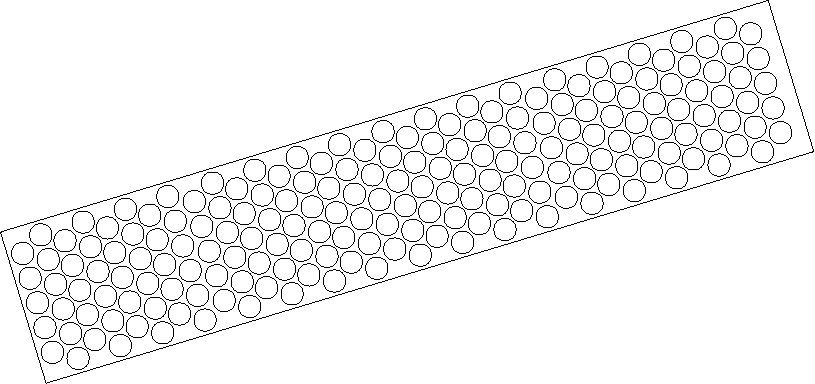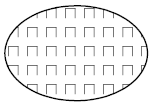Developing an AutoLISP program begins
with an idea for automating some aspect of AutoCAD®.
It may be a need to speed up a repetitive drafting function, or
to simplify a complex series of operations. For the tutorial, the
garden path you want your program to draw is a complex shape with
a variable number of components, based on initial input from the
user. Here's what it will look like:
Your program must do the following to draw the
garden path:
- Given
a start point, an endpoint, and a width, draw a rectilinear boundary.
The boundary can be at any 2D orientation. There should be no limit on
how large or small it can be.
- Prompt
the user for tile size and tile spacing values. The tiles are simple circles
and will fill the boundary but must not overlap or cross the boundary.
- Place
the tiles in alternating rows.
To see how things should work, you can run a
completed version of the application that is supplied with AutoCAD.
To run the supplied example
- From
the AutoCAD Tools menu, choose Load Application.
- Select gardenpath.vlx from the Tutorial\VisualLISP directory,
and choose Load.
- Choose
Close.
- At the Command prompt, enter gpath.
- Respond
to the first two prompts by picking a start point and an endpoint in
the AutoCAD drawing area.
- Enter 2 at the half-width
of Path prompt.
- Choose OK when prompted by the Garden Path Tile
Specifications dialog box.

